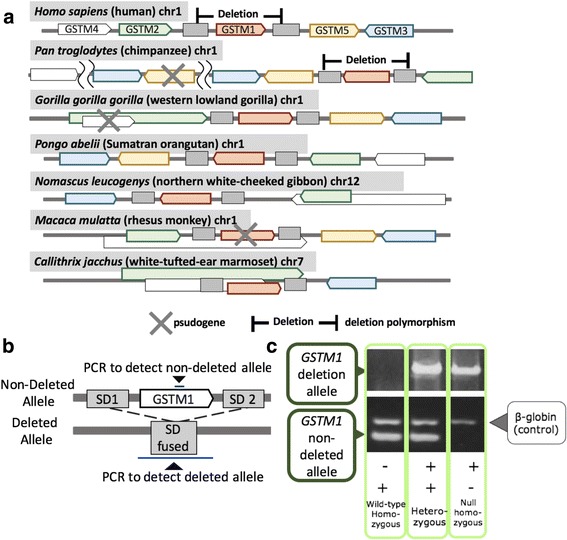Fig. 1.

The GSTM locus evolution: a The chromosomal locations of primate GSTM genes and the segmental duplication sequences confirmed by tblastn and NCBI gene annotations (https://www.ncbi.nlm.nih.gov/gene). Colors indicate each of the GSTM orthologs based on sequence similarity (Additional file 1: Figure S1AB). Diamond indicates deletion polymorphism. Cross indicates pseudogene. Note that there may be some annotation issues with regards to some of the genes, especially outside of the great ape lineages. For example, the GSTM2 and GSTM4 in the gibbon as reported in NCBI overlap with each other. These overlapping genes are indicated by boxes on top of each other. b The location of primers and (c). Genotyping methods for the GSTM1. The GSTM1 non-deleted allele fragment was 215 bp and the β-globin fragment as internal control was 268 bp. The GSTM1 deletion-allele fragment was about 12kbp, enpassing the fused SD. Individuals with only the GSTM1 non-deleted allele were considered as non-deleted homozygous, individuals with both the GSTM1 non-deleted type allele and deletion allele were considered as heterozygous and individuals with the GSTM1 deletion allele were considered as deletion homozygous genotype. Primers are described in Additional file 1: Table S3
